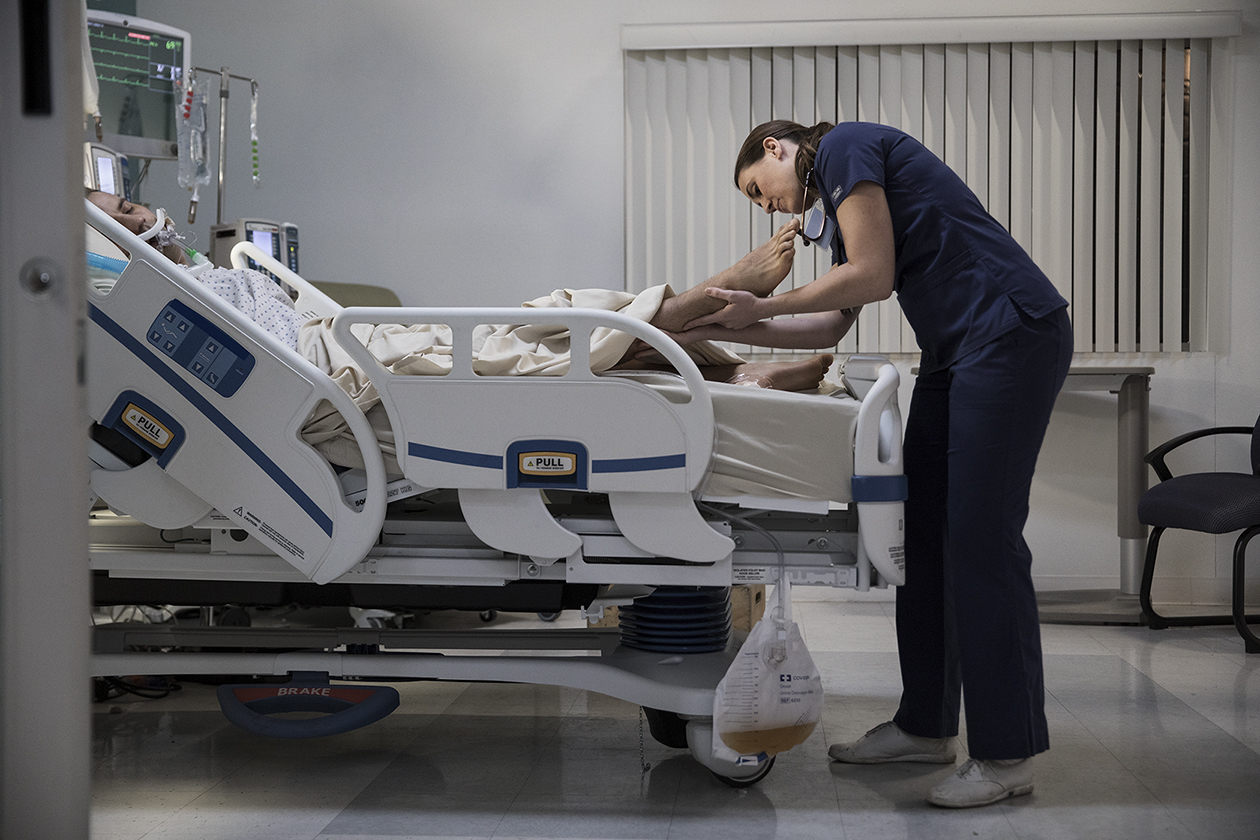
Pressure injuries are a global healthcare problem. Unfortunately, there is no magic formula that predicts how or when a patient may develop a pressure injury. Pressure injury formation depends on many factors including the intensity of the pressure and the presence and magnitude of shear forces, the duration of these forces, and the susceptibility of the patients. We do know that certain patients are at greater risk – this includes those with limited mobility, those in long-term care, and those with spinal cord injuries, hip fractures, and traumatic injuries. Underlying comorbidities such as diabetes also increased risk.
Maintaining skin integrity and focusing on pressure injury prevention is key to ensure skin health, promoting comfort, and helping protect skin from pressure injury development. Often pressure injuries develop into chronic wounds which may lead to reduced quality of life, increased length of stay, and increased cost of care.
Pressure injuries develop through a combination of mechanical forces – pressure, friction, and shear. These, along with moisture, set the stage for PI development. A pressure injury may affect only the top layer of skin (the epidermis), or there may be an injury to the underlying tissue (like dermis, adipose (fat), or muscle). Pressure injuries typically develop over boney prominences (areas of the body where the bones are nearest the surface) or may be related to medical devices such as tubes and braces.
Shear
There is an increased understanding that for most pressure injuries, pressure alone is not the problem. There is also an element of the shear present. Imagine a patient/resident resting in bed with their head elevated – as they slide down in bed, shear forces are at work.
Shear creates a structural deformation of the cells. This deformation makes the cells vulnerable and less resilient to pressure. There is a pinching of the lymphatic channels that drain waste products. These waste products accumulate and cause further cellular damage. Some tissues-including muscle-are is more sensitive to shear forces. So, many full-thickness wounds on areas of high shear (i.e., buttocks, heels) are due to the combination of pressure along with shear forces.
Microclimate
Microclimate is a term that may be unfamiliar to you. It refers to the temperature, humidity, and airflow at the surface of the skin. As temperature and humidity (moisture) increase, the skin becomes weaker, and friction increases at the surface of the skin. So, imagine a febrile, diaphoretic patient sitting on a plastic incontinence pad. The warmth and moisture trapped between the surface of the skin and that pad increases friction and places the patient at increased risk for pressure injury development.
Staging
Pressure injury staging is a crucial part of a comprehensive program. The use of a consistent staging system may increase the clinician’s accuracy of staging and lead to appropriate treatment options.
Pressure injuries are classified according to the amount of visible tissue loss. You will notice as the stages increase numerically, the amount of tissue damage becomes deeper and more extensive. 1 Note that some pressure injuries are staged based on etiology, such as medical device-related and mucosal membrane. The classification identifies all layers of the skin and deeper structures such as; epidermis, dermis, adipose tissue, muscle, and bone.
Pressure Injury Staging 1
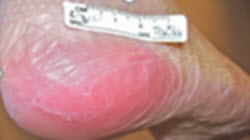 |
Stage 1 –This is intact skin with non-blanchable redness of a localized area usually over a bony prominence |
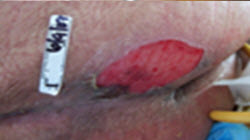 |
Stage 2 – This is a partial thickness loss of dermis presenting as a shallow open ulcer with red-pink wound bed, without slough |
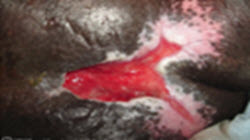 |
Stage 3 – Is a full-thickness tissue loss lesion. Subcutaneous fat may be exposed however Bone, tendon, and muscle are not. There may be slough present, however, you are still able to assess the depth of the tissue. There may be undermining or tunneling. |
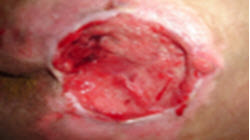 |
Stage 4 – Is a full-thickness tissue loss lesion with exposed bone, muscle, or tendon. Slough or eschar may be present which can sometimes make it difficult to see the wound bed |
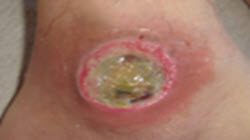 |
Unstageable – Is characterized as full-thickness skin or tissue loss in which the actual depth of the ulcer is obscured by slough or eschar. |
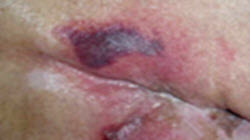 |
Deep Tissue PI – These usually develop over a bony prominence due to sustained unrelieved pressure and or repeated shear forces to the involved tissues |
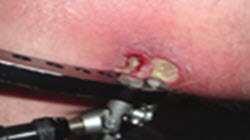 |
Medical Device Related Pressure Injury-These types of injuries are becoming more common. Critically ill and neonates are particularly vulnerable to these injuries. These can be caused by Nasal cannulas, Endotracheal tubes, external braces, the list goes on. |
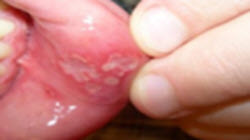 |
Mucosal Membrane Pressure Injury – Mucosal membrane pressure injury is found on mucous membranes with a history of a medical device in use at the location of the injury. Due to the anatomy of the tissue, these injuries cannot be staged. |
The pressure injury staging system does not provide an accurate picture of wound characteristics such as size, condition of the wound base or presence of infection. Additional documentation and assessment are needed.
Through these learnings and resources, our goal is to provide you with resources and tools to further educate you and your staff. Please visit our pressure injury resources webpage to download a free staging card and watch/read other educational resources.
